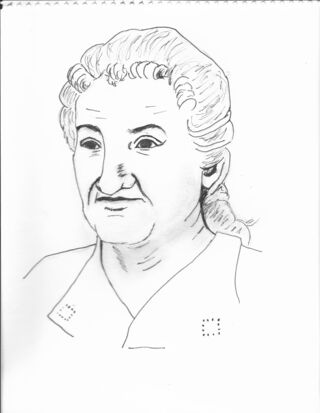Coronavirus Disease 2019
Accidental Cannibalism: Why Killers Serve Bodies as Food
Four reasons why some predators dupe others into ingesting human remains.
Posted January 9, 2021 Reviewed by Kaja Perina

I did a roundup at the end of 2020 that mentioned serial killers who’d died of COVID-19. Recently, another one popped into the news. Instead of just adding her to that post, I thought her peculiar case (and others like it) warranted its own discussion. So, let’s talk about killers who feed human body parts to unwitting recipients.
Sofya Zhukova had been arrested for three murders in Russia and was suspected in four more. She was 81 when she died from COVID-19 on December 29, still awaiting trial. Her neighbors believe she disposed of human flesh from her victims by cooking it into meaty treats. Among her admitted victims were an eight-year-old girl, an elderly female tenant, and a janitor for Zhukova’s building. Knives and saws in her residence showed traces of blood, and police found body parts in her refrigerator. The press called this former slaughterhouse worker the “female Sweeney Todd.”
Reading about Zhukova reminds me of other cases where killers included human remains in food they prepared for others. The glaring question is why. So, let’s look at the variety of motives I’ve noticed in these cases.
An obvious reason is utilitarian—cooking and serving the flesh as if it were any other meat can effectively dispose of body parts when you have no other safe means. In Northern Michigan, Kelly Cochran and her husband, Jason (whom she later killed), seemed to have murdered her former lover and served his cooked flesh to neighbors. She admitted she’d coaxed Chris Regan to their home, where he was shot. Neighbors heard the din of a power saw in the middle of the night. They soon received an invitation to come over for a barbecue—uncharacteristic of this couple. In fact, that week, they were invited over several times. The Cochrans served only cooked meat, in a variety of forms. One person who partook thought the burgers tasted strange. No one knows whether the meat was human, but the evidence strongly suggests it.
In cases where killers ran a butcher business, adding human flesh to the menu not only got rid of evidence but also enriched them. During conditions in Europe between the world wars, several cannibal butchers were at work. From 1918-1921, Carl (or Karl) Grossman killed more than two-dozen women in Berlin and sold their flesh on the black market. In Hanover, Fritz Haarmann teamed up with a male sex worker to lure young men into a game of “terminal sex.” After he killed them, Haarmann would consume pieces of their flesh and sell the rest to customers.
Yet, such conditions do not explain Joe Methany’s nasty acts in Maryland. Convicted of two murders, he claimed in a confession that he’d killed ten. He also said he cut up two victims and served their flesh as burgers. “I lured 2 more crackwhores up there to my trailer," he wrote. "I killed and butchered their bodies up. I cut the meat up and put it in some Tupperware bowls then put it in a freezer ... Over the next couple weeks on the weekends I opened up a little open-pit beef stand. I had real roast beef and pork sandwiches and why not they were very good. The human body tastes was very similar to pork. If you mix it together no one can tell the difference.” His stated motives were revenge and thrill. He thought it was fun to turn unsuspecting customers into cannibals.
Nathaniel Bar-Jonah, a convicted child predator, might have fed at least one victim to neighbors. In 1979, he told a prison psychiatrist his fantasies of kidnapping children, murdering them, and then consuming their bodies. Still, he was released. After he moved to Montana, but he was arrested. A search of his home found thousands of pictures of boys, as well as a diary that showed his desire to eat his victims. Encrypted writings talked of “little boy stew,” “little boy pot pie,” and lunch served with “roasted child.” An investigation held Bar-Jonah responsible for the 1996 disappearance of Zachary Ramsay, who vanished on his way to school. Evidence suggested that Bar-Jonah had cut up the boy’s body for stews and hamburgers that he served to unsuspecting neighbors at a cookout.
So, I’ve proposed evidence disposal, enrichment, and thrill as motives for duping others into eating human flesh. Sometimes, they're combined. Yet a most singular motive in another case involved a delusional belief in supernatural power and protection.
Leonarda Cianciulli, an Italian serial killer, murdered, dismembered, and cooked up three of her friends. But she thought she had a good reason. A palm-reader had told her that her children would all precede her in death, and most had. Of seventeen pregnancies, by 1939 she was left with only four living children. Then her eldest son went off to train for war. Cianciulli panicked. She knew she’d need extreme measures to keep him alive. A life for a life. That’s what she’d learned from her supernatural lore.
Tricking women she knew into believing they were going on trips to gain unique opportunities, she got them to cover their own tracks before killing them. After cutting them up in her kitchen, Cianciulli baked their blood to make flour for teacakes and boiled their flesh with ingredients she’d used to make soap and candles. She sold or served the teacakes to visitors, as well as sending some to her son. When this “charm” seemed to work the first time (he remained alive), she repeated it to strengthen its power. After her third murder, Cianciulli was caught. She confessed, apparently believing that a mother’s duty to protect her child trumped any law. About one woman who was overweight, she said that the extra fat made the cakes taste sweeter.
The idea that killers might consume their victims is always gruesome; that they might instead serve human flesh to those they know is unthinkable. But they have multiple ways to justify such acts, and sometimes to even enjoy them.


